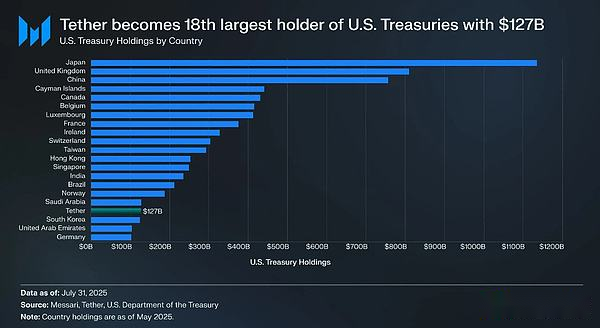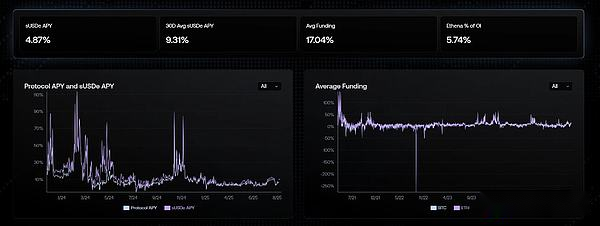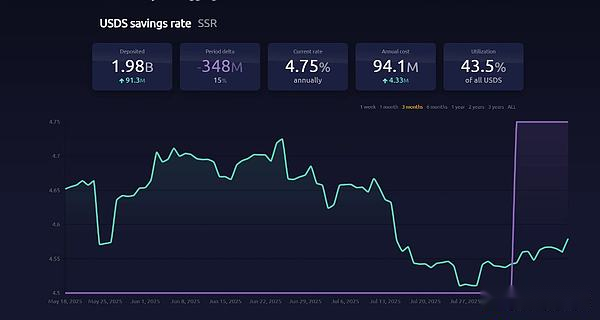
Author: imToken Source: X, @imTokenOfficial Compilation: Shaw bitchain vision
Have you noticed that there have been platforms that recently advertised that USDC’s annual rate of return is 12%?
This is not just a marketing gimmick.Stablecoin holders have been unable to earn money for years — issuers have taken the proceeds from idle funds, such as investing in U.S. Treasuries and short-term notes, as is the case with both Tether’s USDT and Circle’s USDC.
Now, this kind of gain is beginning to be shared.In addition to USDC’s incentive scheme, a new wave of profitable stablecoins is emerging, allowing holders to earn interest directly from their underlying assets.This not only reshapes the way stablecoins value is evaluated, but it could also become a new growth driver for RWA (real-world assets) and Web3.
1) What is a income stablecoin?
By definition, income stablecoins hold assets that generate returns and return those returns (usually from Treasury bonds, other RWA assets or on-chain strategies) to holders.This is in contrast to traditional stablecoins such as USDT or USDC, where the issuer retains earnings and users benefit only from pegging to the US dollar without interest.
In fact, holding this token alone becomes a passive investment.Simply put, it redistributes the Treasury bond interest that issuers (such as Tether) have always retained in the past to stablecoin users.
Example:
When Tether issues $10 billion in USDT, users deposit $10 billion and receive $10 billion in tokens.
Tether will not pay interest on these deposits.If cash is invested in U.S. Treasury bonds, interest will be converted into low-risk income with near-zero cost.

According to its second-quarter financial audit report, Tether directly holds more than $157 billion in U.S. Treasury bonds (directly holds $105.5 billion and indirectly holds $21.3 billion), making it one of the world’s largest U.S. Treasury bond holders.As of July 31, 2025, Tether had surpassed South Korea to become the 18th largest holder of U.S. Treasury bonds, according to Messari data.
At a yield of about 4%, this is equivalent to about $6 billion in interest per year, or about $700 million per quarter.Tether’s operating profit of $4.9 billion in the second quarter highlights the strength of this model.
At imToken, we look at stablecoins from the perspective of user needs – there is no longer a single narrative.In our framework (Simplified version of stablecoins: a practical framework for meeting user needs), income-based stablecoins stand out as a unique category, paying holders ongoing earnings in two main ways:
-
Native income: Just holding tokens can make a profit, just like on-chain savings accounts (such as USDe, USDS).
-
Through official income channels: Tokens do not automatically accumulate income, but issuers or agreements provide official channels to earn income, such as DSR deposited into DAI, staking or conversion into income-based receipts.
If 2020 to 2024 is the stage of scale expansion, then 2025 marks the dividend phase.With compliance, earnings and liquidity balanced, profitable stablecoins may develop into a trillion-dollar segment.

2) List of popular projects
Most designs revolve around tokenized U.S. Treasury bonds: your on-chain token is supported by Treasury bonds held by the custodian, combining low-risk returns with on-chain liquidity and the composability of DeFi (borrowing, leverage, etc.).
In addition to mature protocols like MakerDAO and Frax Finance, new entrants like Ethena (USDe) and Ondo Finance are also expanding rapidly, covering from protocol native to CeDeFi models.
Ethena — USDe
The supply of popular projects in this cycle has exceeded US$10 billion in recent years.According to Ethena Labs, USDe’s annualized yield is currently around 9.3%, sometimes even more than 30%.
The returns mainly come from two aspects:
-
ETH liquid staking rewards(approximately 4%, relatively stable)
-
Delta hedge financing income(Short perpetual contracts) is driven by the market, so the annualized rate of return will fluctuate with financing sentiment

Ondo Finance — USDY
Ondo is a real-world asset (RWA) platform that brings fixed income to the chain.Its USDY earnings (USDY) is a tokenized note backed by short-term U.S. Treasury bonds and bank demand deposits.In fact, this is a bearer bond, meaning holders can earn no KYC.
USDY provides on-chain capital with a treasury-like exposure and combines a complete DeFi portfolio (borrowing, pledging, etc.), making it the top agent for on-chain money market funds.
PayPal — PYUSD
PYUSD was launched in 2023 as a payment-based stablecoin (custodian by Paxos; fully backed by US dollar deposits and short-term Treasury bonds).
In 2025, PayPal added a revenue distribution in its selected custodial bank settings, returning part of the underlying interest (from Treasury bonds and cash equivalents) to holders, combining stablecoin payments with earnings.
MakerDAO — EDSR / USDS
Maker remains the dominant decentralized stablecoin protocol.Its upgraded structure (USDS + enhanced Dai savings rate) allows users to deposit directly into the agreement and automatically obtain the benefits linked to Treasury bonds without additional steps.
-
Current savings rate(SSR): 4.75%
-
deposit: About $2 billion
This rebranding highlights Maker’s evolution from a pure DeFi stablecoin to an RWA-driven revenue distribution platform.

Frax Finance — sFRAX
Frax Finance is one of the most active DeFi projects with the Fed, including the pursuit of establishing a main Fed account.Its Treasury-backed pledge voucher sFRAX buys U.S. Treasury bonds through Lead Bank (Kansas City) brokerage firms and tracks Fed interest rates.
Currently, more than 60 million sFRAX is pledged, with an annualized rate of return of approximately 4.8%.

Notice: Not all profitable stablecoins can last forever.For example, USDM has entered the liquidation phase and has permanently ceased to cast and can only be redeemed for a limited amount.
Overall: Most designs focus on short-term U.S. Treasury bonds and reverse buybacks, offering 4%-5% quotation rates that match current Treasury bond yields.With the addition of more centralized finance (CeFi) platforms, regulated custodians and decentralized finance (DeFi) protocols, this sector is expected to occupy an increasingly large share of the stablecoin market.
The sustainability of income stablecoins stems from conservative assets—mainly U.S. Treasury bonds.Holding U.S. Treasury bonds has almost zero credit risk and can also earn about 4% or more.The agreement invests in these tools, and after deducting operating costs, part of the profit is distributed to the holders, forming a flywheel effect of “treasury bond yield → stablecoin adoption”.
Holders only need to hold the token to receive interest backed by Treasury bonds.With short- and medium-term yields close to or above 4%, most fixed-income stablecoins currently yield around 4% – 5%.
This kind ofEarn as you hold“The pattern is naturally attractive:
-
Ordinary users: Idle funds generate passive returns.
-
DeFi protocol: Treat it as high-quality collateral for borrowing, leveraged trading and derivatives.
-
mechanism: Obtain traditional benefits on the chain in a compliant and transparent manner to reduce operating costs.
Yield stablecoins are one of the clearest application cases for real-world assets (RWA) – which have expanded from crypto-native protocols to new entrants supported by payment giants and Wall Street.Regardless of how U.S. interest rates change, this shift has led to the development of stablecoins from simple “anchoring” to “dividends.”
By transferring earnings from issuers to holders, these assets combine real-world fixed income with on-chain liquidity and composition, making earning stablecoins a potential growth engine for stablecoins and the wider integration of cryptocurrencies with traditional finance.







